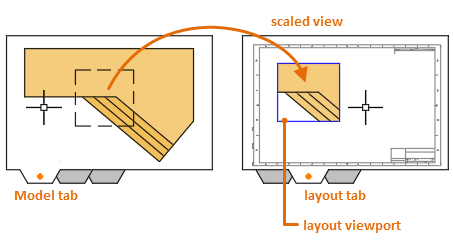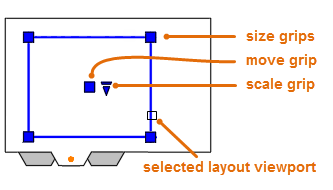Layout viewports are objects that display views of model space. You create, scale, and place them in paper space on a layout.
On each layout, you can create one or more layout viewports. Each layout viewport is like a closed circuit TV monitor of a view of the model at a scale and orientation that you specify.

Create Layout Viewports
When you use the MVIEW command to create a new layout viewport, you specify the view that you want to display in it with one of several methods:
- Click the diagonal corners of a rectangular area, and the extents of model space are displayed automatically.
- Specify the Named option to use a previously saved model-space view.
- Specify the New option for temporary access model space to define a rectangular area.
- Choose the Object option and select a closed object such as a circle or closed L-shaped polyline to convert into a layout viewport.
Modify Layout Viewports
After you create a layout viewport, you can change its size and properties, and also scale and move it as needed.
- For control of all the properties of a layout viewport, use the Properties palette.
- For the most common changes, select a layout viewport and use its grips.

Locked Layout Viewports
To prevent accidental panning and zooming, each layout viewport has a Display Locked property that can be turned on or off. You can access this property from the Properties palette, the right-click menu when a layout viewport is selected, a button on the Layout Viewports tab on the ribbon, and a button on the status bar when one or more layout viewports are selected.